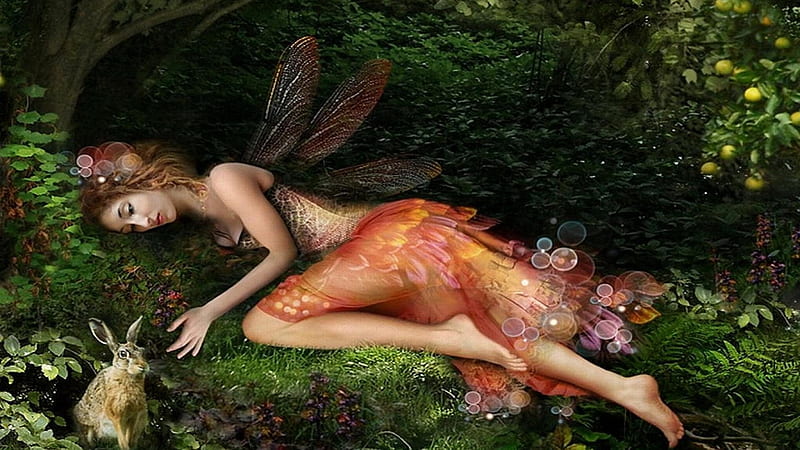The Fairy Dew Drop
By Laura Ingalls Wilder
Annotations by Mary Miller/KK

Down by the spring one morning
Where the shadows still lay deep,
I found in the heart of a flower
A tiny fairy asleep.
Her flower couch was perfumed,
Leaf curtains drawn with care,
And there she sweetly slumbered,
With a jewel in her hair
But a sunbeam entered softly
And touched her, as she lay,
Whispering that ’twas morning
And fairies must away.
All colors of the rainbow
Were in her robe so bright
As she danced away with the sunbeam
And vanished from my sight.
‘Twas while I watched them dancing,
The sunshine told me true
That my sparkling little fairy
Was lovely Drop O’ Dew. [1]
WILDER, LAURA. “THE FAIRY DEW DROP,” IN LAURA INGALLS WILDER, FAIRY POEMS, ED. STEPHEN W. HINES, 11-15. NEW YORK: BANTAM DOUBLEDAY DELL, 1998.
[1] Drop O’ Dew is the fairy who helps take care of the flowers. All night she carries drink to the thirsty blossoms, bathes the heads of those who have the headache from the heat of the day before, straightens them up on the their stems, and makes their colors bright for the morning.
Contexts
According to editor Stephen W. Hines, “The Fairy Dew Drop” was originally published in February 1915. His book collects five poems Ingalls wrote while visiting her daughter Rose in San Francisco. Ingalls aspired to authorship but had not yet written her famous Little House on the Prairie novels. With her daughter’s encouragement, she submitted poems to the San Francisco Bulletin, which eagerly accepted them. Hines includes Rose’s short essay, “Fairies Still Appear to Those With Seeing Eyes,” which she explains her feelings about fairies and the importance of imagination for children:
“I have a feeling that childhood has been robbed of a great deal of its joys by taking away its belief in wonderful, mystic things, in fairies and all their kin. It is not surprising that when children are grown, they have so little idealism or imagination, nor that so many of them are like the infidel who asserted that he would not believe anything that he could not see.” The Quaker made a good retort, ‘Friend? Does thee believe thee has any brains?'”
Resources for Further Study
- Learn about the lore of fairies and other fantasy beings in The World Guide to Gnomes, Fairies, Elves, and Other Little People by Thomas Keightley, originally published in 1878 with the title The Fairy Mythology.
- Read the other poems in Wilder’s Fairy Poems.
- Laura Ingalls Wilder is best known for her books about growing up in a pioneer family, beginning with Little House on the Prairie. Her autobiography, Pioneer Girl, tells the true story of a family moving to the frontier of the western United States in the nineteenth century. Some scholars note Wilder’s stereotypical portraits of Native Americans in her famous novels.
Contemporary Connections
Fairies continue to hold children in thrall, feeding imaginations and creativity. Tinker Bell is a well-known modern fairy first introduced in J. M. Barrie’s 1904 play Peter Pan. Tinker Bell has gone on to have a stellar career with Disney, along with a host of other fairy co-stars. A recent film example is Tinker and the Legend of the Neverbeast. Tinker Bell and her fellow fairies have garnered great commercial success, so much so that since 2005 Disney has had a division devoted to them, the Fairy Franchise.